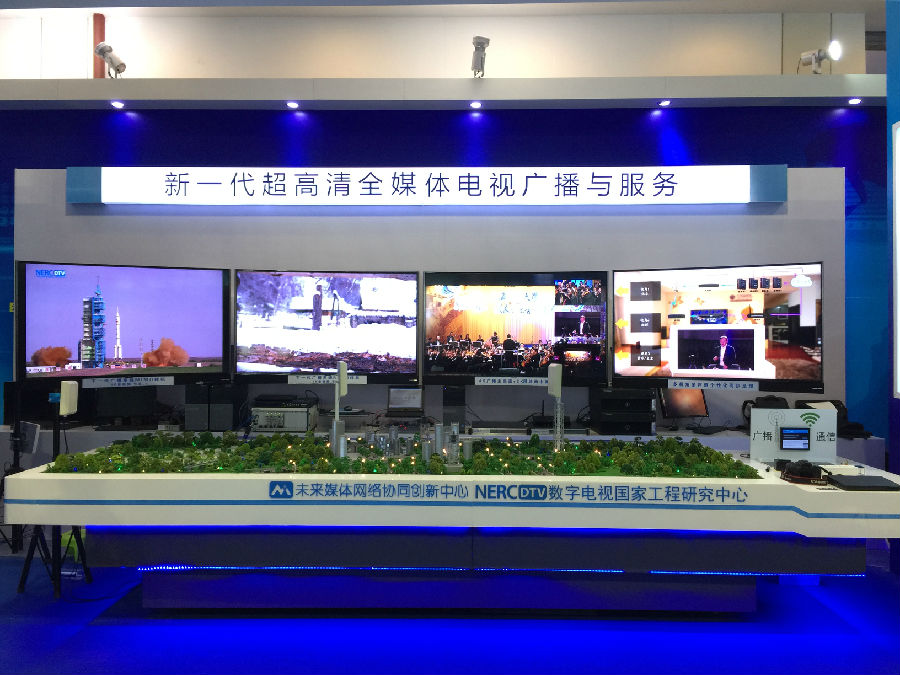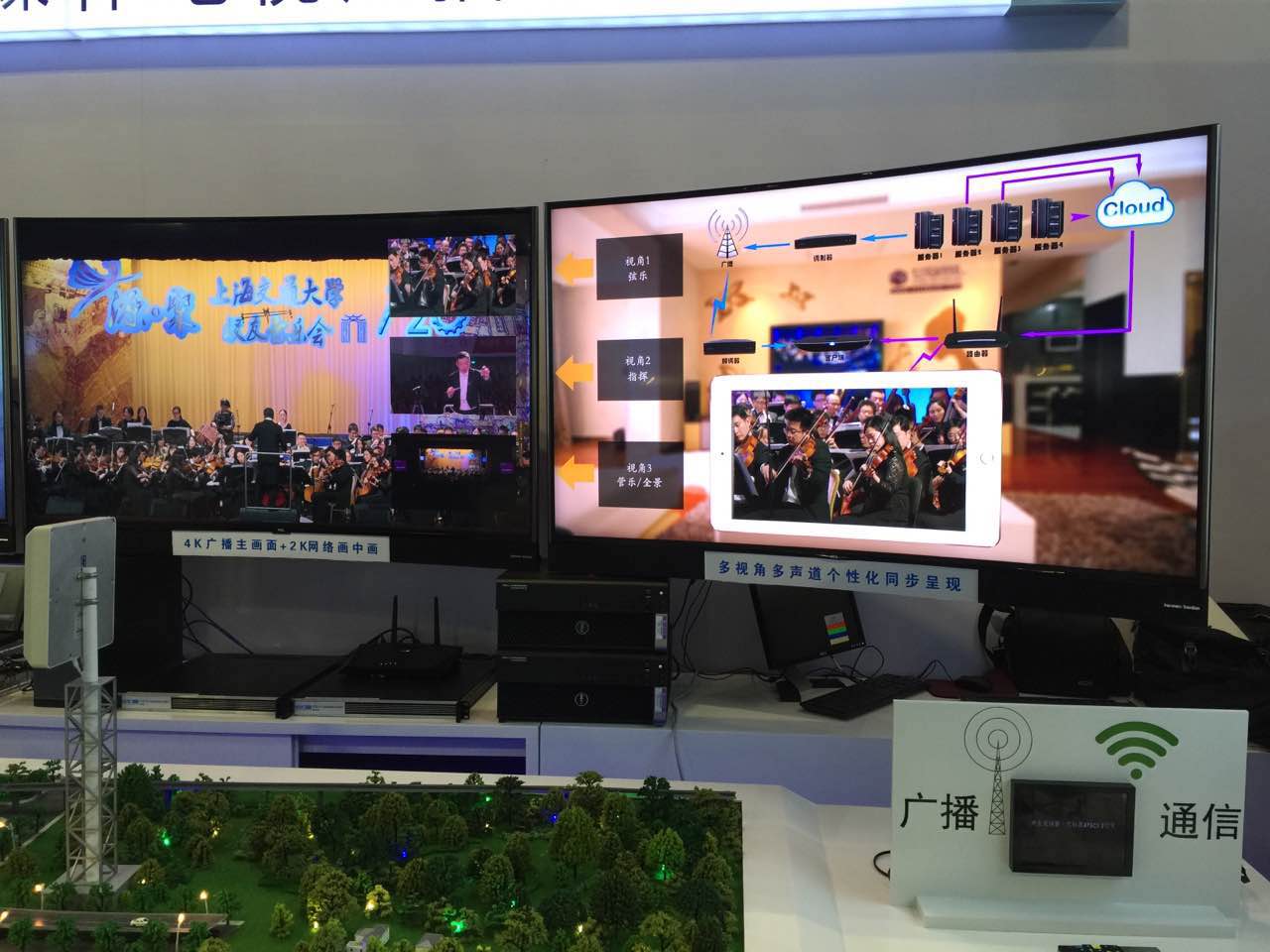China Has Made Major Breakthrough in Next Generation Medianet Technologies
China’s National Science and Technology Innovation in the 12th Five-year Period Exhibition opened on May 31st in Beijing. The demonstration of “New Generation of Ultra-Definition and Omni-media Broadcasting and Service System” was Co-organized by Shanghai Jiao Tong University Cooperative Medianet Innovation Center (CMIC), National Engineering Research Center of Digital Television (NERC-DTV), Peking University, China Central Television, Huawei and other domestic leading research institutes and enterprises and attracted great attention in the whole exhibition period.

In recent years, with the new wave of content connection evolution featuring diversity and high quality video and audio services, new generation of media distribution capabilities is becoming key characteristics of the next generation of internet. The independent scale expansion and technical evolution of internet, broadcasting network and telecommunication can’t meet the networking development requirement of China. It is necessary to develop a new system of more efficient and secure media network system based on the comprehensive collaboration of existing network resources.
“We must breakthrough the core technology and to realize corner overtaking in some field and aspect” President Xi Jinping mentioned to play proactively in the era of internet. “What’s core technology? The first is the fundamental technology or general technology, then the asymmetric 'killer' technology, the third is the cutting edge technology or disruptive technology.”
Taking the country’s key strategy of “Convergence development of traditional media and emerging media“ as a guide, CMIC and NERC-DTV have successfully developed the future medianet “C-R-U-I-S-E” project featuring “Controllable”, “Rich Media”, “Ubiquitous”, “Immersive”, “Social” and “Experience” system and the system development focuses on the heterogeneous network collaborative transmission, multi-source data packaging, ultra-definition codec and computing, media network content security, media cloud infrastructure and services. The goal of this project is to efficiently distribute the media data over collaborative networks, have the massive, diverse and dynamic media content effectively organized in the new way of presentation, processing and reliability. The system demonstrated the latest research progress and the future application scenario from the consumer perspective of enjoying the interactive immersive media at home and in public places.
A new generation of ultra-definition television broadcast MIMO (multi-antenna transmission and receiving system) prototype system is one of the highlights of the demonstration, which is the world's second implementation of broadcasting MIMO system. The MIMO prototype system on display realized to transmit 62Mbps in one 8Mhz channel which enables two 4K ultra-definition programs or one 8K ultra-definition program in one terrestrial broadcast channel. This prototype also supports a flexible frame structure and time frequency resource scheduling and multi transmission pipes. Data from different pipes can be simultaneously applied in mobile and fixed reception. This is not only a good save of spectrum resources, but also to provide a very large space for flexible distribution of massive high quality and diversified video content.
Another highlight of the exhibition is a new broadcast and network convergence protocol layer p protocol system (SMT). SMT successfully integrate the broadcast network and IP network to achieve a highly synchronized and personalized service with high quality immersive video and multi-view streams and multi-source audio. The synchronization of media presentation is achieved by inserting time information, packaging the time slice and processing the metadata in the receiving side. With SMT, future media operator can dynamically adjust the broadcast and broadband transmission to select the lowest cost of transmission solution based on the actual usage status of the most users. Users can both enjoy the panoramic views of large scale sports games and shows, and select to see the favorite player or star’s detailed synchronized performance and even listen to different narrator via his/her own smart phone to pad, without caring about the distribution channel. All these experience will bring a new wave of media consumption.

The technical architecture, large capacity, high reliable physical transmission scheme and new content package protocol are the technical focuses in the world. The demonstration of the new generation of medianet system shows the important progress China has made and has narrowed the gap between the developed countries in some technical aspects.
In order to increase the competence of Chinese industry in the international market, CMIC and NERC-DTV researchers have actively participated in the competition of next generation broadcast and media international standards, they have led domestic partners to make significant contributions to the next generation international digital television and media broadcasting standard - ATSC 3.0, which will be deployed in North America and other global regions.
All these efforts have laid a good foundation for Chinese next generation digital television national standard systems, and will directly promote the technological progress and increase the competence of the Chinese consumer electronics industry in the international market.